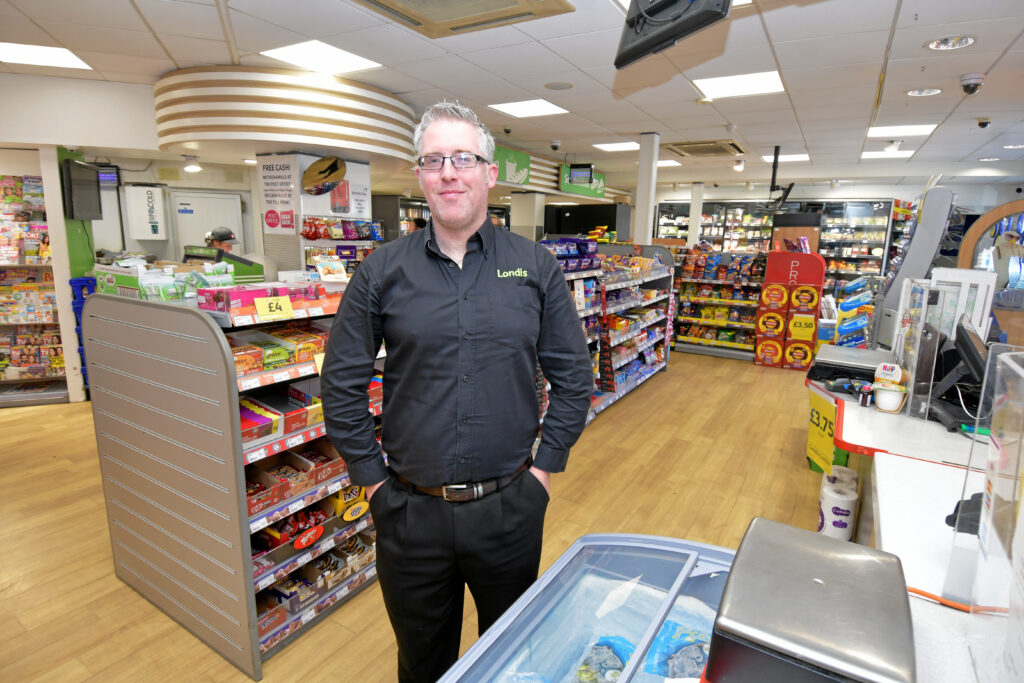
The Independent Achievers Academy (IAA) Retailer Spotlight is a series of talks with retailers from the IAA community about what makes them successful, how they’re dealing with current challenges and changing consumer demand and their future goals. Its aim is to help independent retailers to learn, be inspired and drive their business forward.
Dave Hiscutt, operations manager of Steve Bassett’s five stores, including Bassett’s Londis Abbotsbury Road in Dorset explains how he’s tackling these challenges.
“Steve has owned the family-run business, Bassett’s Londis Abbotsbury Road for more than 25 years,” says Dave. “They have a good, tight-knit team who have been with us for several years. The longest serving member has been with us since Steve and his family bought the store.”
Bassett’s Londis Abbotsbury Road is 1,900sq ft and is known for its unique layout and dedicated food to go area. The store also supplies its Londis Weymouth food to go operation.
“We have a kitchen upstairs and we make rolls every day that are shipped to the other store,” Dave says. “The operation is very strong across the store, which has helped push margins in both stores.”
Steve and Dave were recognised as this year’s IAA Category Stars for Availability and Shop Layout. One of the things the retailers stood out for Availability was increasing the frequency of gap checking to ensure 100% availability. In the event of gaps, Dave, Steve and his team are aware of where they are and what to do, so they can react instantly.
The retailers stood out for Shop Layout after using smells to entice customers towards the bakery and food to go areas, as well as focusing on the psychology of their customers. They also expanded the breadth of products they have within the queuing system to boost spend.
Here are 11 ways Dave, Steve and their teams have created a strong shop layout and become a destination.
Offering added value
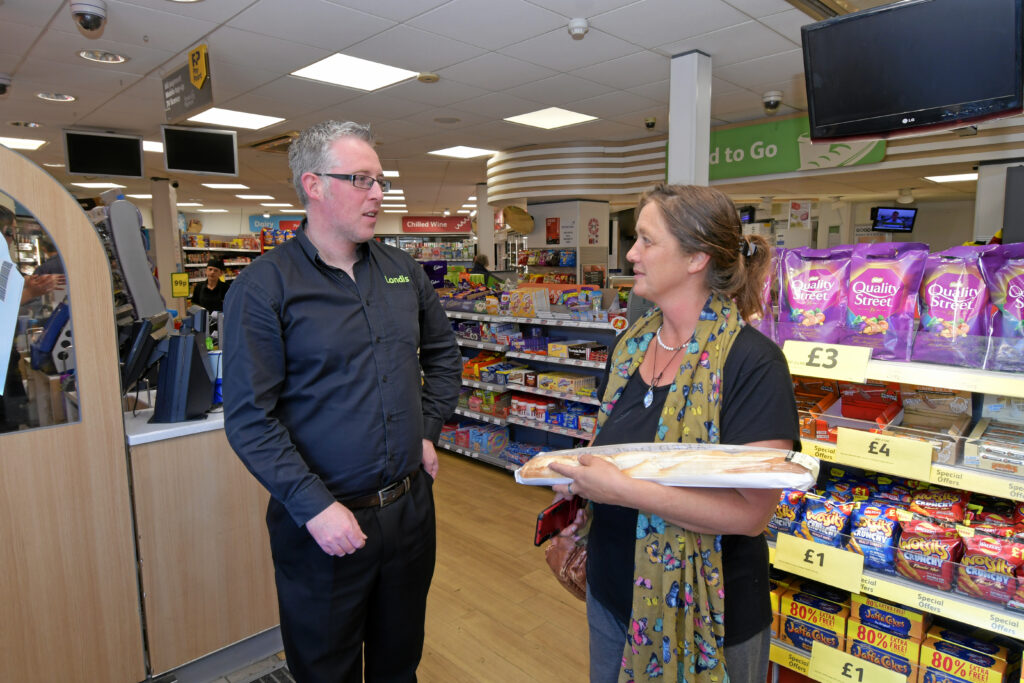
To help become a destination for food to go, Bassett’s Londis Abbotsbury Road offers a wide and unique range of food to go options, like the ‘Jurassic breakfast role’.
“The Jurassic breakfast role is available in the mornings and includes bacon, sausages, omelettes and hash browns – it’s huge,” says Dave.
“We’ve got regular customers for the product, and we installed an additional coffee machine to help keep that demand, too.”
Managing rising costs
“There are price increases across the board, that’s just the way the world is at the moment,” says Dave. “Sometimes the increases are almost daily.”
Dave and Steve are stomaching some of the costs used in the store’s food to go area but are boosting their margins any way they can.
“We’re looking at how we can innovate. For example, with a brownie, we’ll add Biscoff biscuits and spread or Nutella, etc.
“We can then charge £2.50 for that one brownie that we would have only got 50p for if sold as a plain brownie.”
The store offers a ‘Jurassic breakfast role’, which Dave says has created excitement and adds that being innovative means not being afraid to charge a little more, especially for food to go.
He says: “If you go to a coffee shop, the price is heightened for cakes and a single pastry, but customers still pay it. We won’t ever be at that level, but if we want those higher margins, we shouldn’t fear charging a little more.”
Supplier partnerships and good promotions have also helped the retailing duo offer added value. “We’ve had a Tchibo coffee machine for many years and we use coffee as a footfall driver,” Dave says. “We easily sell up to 100 cups a day.”
Dave and Steve are also reviewing their equipment to ensure they run an efficiently as possible. “It’s looking at the business as a whole and seeing how we can improve everything to save costs.”
Keeping ahead of availability issues
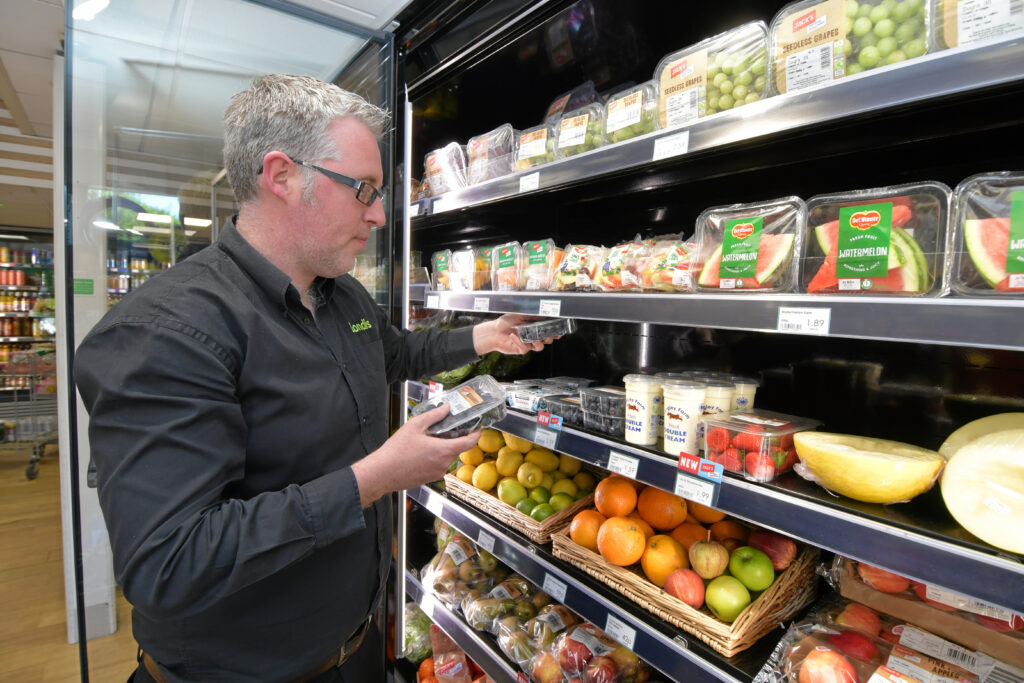
“Empower your staff. They help us achieve our high availability levels and we make sure they understand why it’s so important,” says Dave.
Dave and Steve have developed their teams significantly using the IAA, with many progressing to store managers. Training includes having them carry out gap scans every day.
“Gap checks is also making sure the stock is right and being almost obsessive when something isn’t on the shelf,” says Dave. “By having the team carry out gap checks, too, it means I’m then almost pulled into the question to ask ‘why have we got that gap’.
“The biggest aspect is having staff understand the importance of not having gaps on the shelf.”
Dave, Steve and his team also use EPoS data to maintain availability. “We recently moved to a new company and we’re in the process of transferring it to all of our stores,” Dave says.
“There’s a stronger process there and when staff gap scan, it updates the system. If it says we’ve got stock, they’re able to report to me to make an adjustment, which otherwise doesn’t get processed until I do something about it.”
Dave and Steve don’t allow their team to change the stock on their EPoS system. “It’s important to review the gap scans, too, which is done by myself or a senior manager.”
Maintaining availability in-store and online
Availability is a challenge for many retailers but balancing this alongside an online delivery service poses additional struggles.
“It’s a huge challenge, but our success is paramount on staff,” Dave explains. “We have two-to-three people who look after ordering, as well as online deliveries. They all communicate with each other.”
Dave says gap scans help them balance in-store and online availability. The team spot any out of stocks quickly, which is then updated on their delivery app.
“Snappy Shopper has a really good interface, which helps us greatly as we’re able to adjust everything easily,” says Dave.
“But overall, you need to keep that focus all the time. If something goes wrong, have the right conversations in the right tones and empower your team.”
Dave recommends providing your team with the right tools and investing in them, so they feel empowered. “We want to retain talent, so this is imperative.”
How we keep waste low
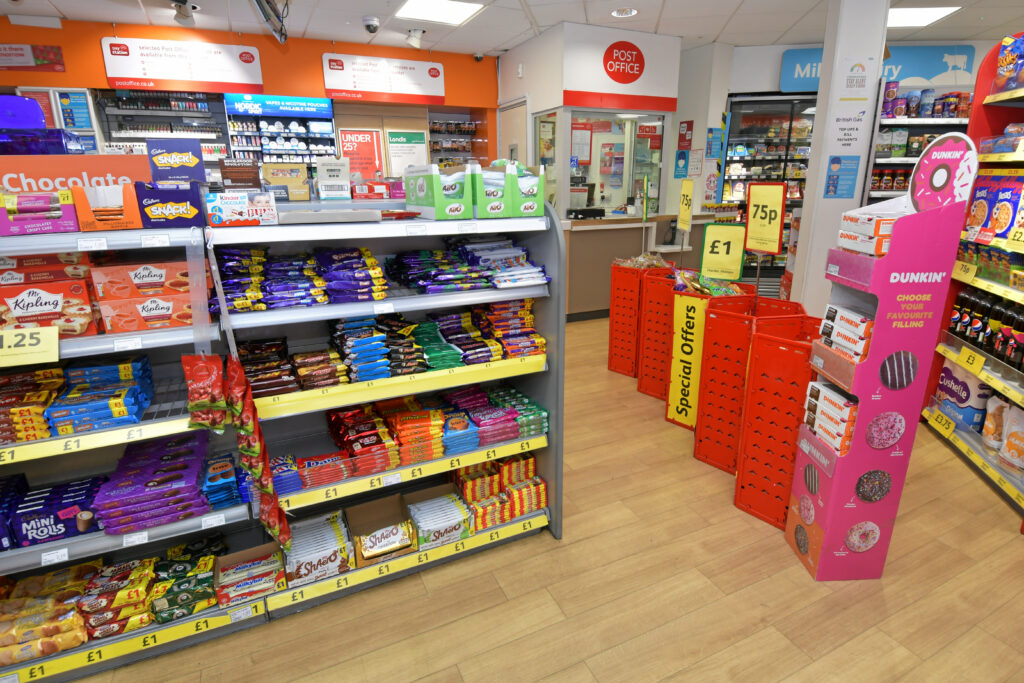
Dave and Steve have a ruthless reduce to clear policy in store. Products are left until the night before at full price, before being reduced by 25%, then 50% off in the evening.
“We have a different process for sandwiches as they only a few days life, but we often find longer life products are picked up by customers anyway,” says Dave. “Some of our stores also use Too Good to Go.”
Dave also uses reports on his EPoS system to understand waste levels. “We have the LVPOS system, which generates reports at a touch of a button, saving me two-to-three hours each week.”
Using his EPoS system means he can understand which lines are being consistently reduced, allowing him to act and delist a line if needed.
“It’s been really interesting to dive deep into the data, we want to have a credible range and we can now see what that looks like with the new system,” Dave adds.
Focus on customer psychology
Dave and Steve focus on the psychology of their customers to understand them better, using this to create a strong layout.
When asked how he came up with the idea, Dave said: “I read this book years ago after Steve said I should read it and it was about the shopper psychology – and it’s stuck with me ever since.
“It’s fascinating when you consider shopper missions and how receptive people are to impulse products, etc. And it’s also interesting how differently males and females shop.”
Dave and Steve have taken their learnings and trained the team to act in the same way. “The little nuggets of information that we’ve accumulated over the years have shaped how we operate the business and shape our layout.”
For Dave and Steve, the key to a strong store layout is thinking about how they can get additional spend once a customer has met their mission.
“Think about linked purchases,” he says. “They’ve got what they need in their basket, but then introduce them to ‘yummy’ things that we sell, like the bacon rolls.
“It’s also about making sure other products are in the grocery area on clip strips and ensuring they can complete their missions easily.”
Dave’s top tips for a strong shop layout are ensuring it’s clear and concise, signposted and utilising shelving space. Dave and Steve have lower shelves in the front of the store and higher shelving as customers make their way to the back of the store. This helps them to see where categories are quicker.
Why we focus on zoning the store
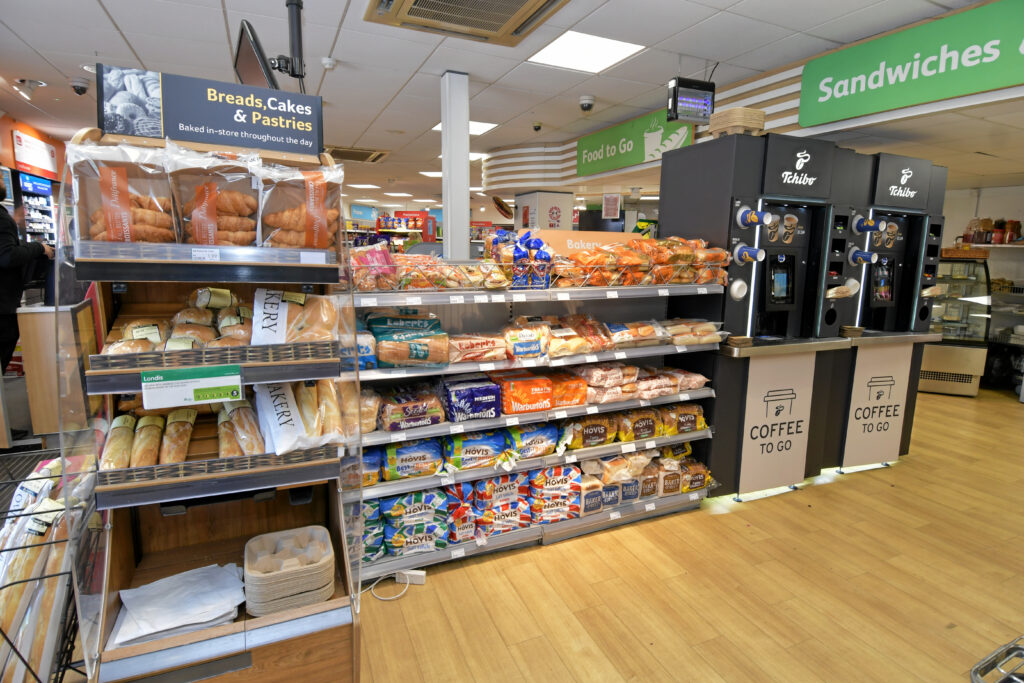
“In the food to go area, we have impulse and soft drinks close to each other, and we have the local bakers’ products stocked there, too,” says Dave.
“Grocery products are then towards the back of the store, which also includes milk and bread. Alcohol is also nearby, so it’s very easy for customers to shop and to understand we’re a local store, too.”
Within the bakery, Dave and Steve make sure they have a full offering, including cakes and pastries. Dave also stacks alcohol in his BWS area, especially at Christmas.
“Sometimes it gets forgotten when you’re looking at your store layout, but it makes complete sense as soon as you think about it.”
Dave and Steve also place products in the queuing system, including chocolate and cakes. “We’re not affected by HFSS, so we’re able to utilise the till area, but if we have to change that, we’ll change it,” adds Dave.
The future of the business
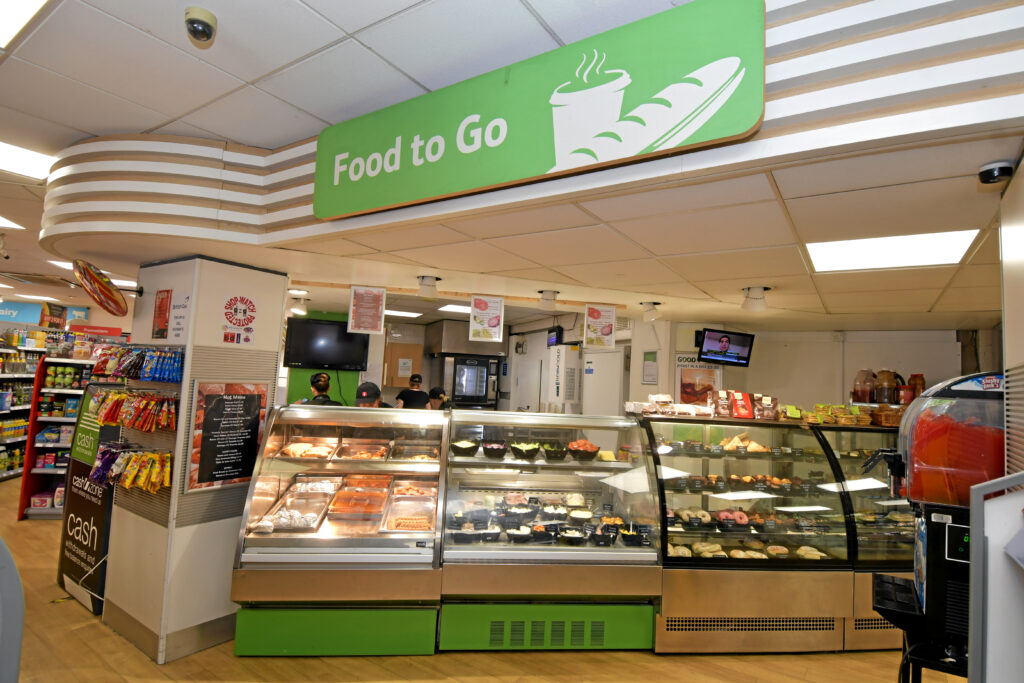
“All our future plans will be around food to go, like expanding the operation into the evening.
“We want to introduce tray bakes, which we’ve had the idea for the past few years,” Dave says. “The challenge is getting it right.”
Making food to go relevant in the evening means more than just tray bakes, but making their offering relevant, like adding in jacket potatoes, hot food rolls and pizzas.
“We can go further and making it relevant in the evening will help us step to the next level.
“On the grocery side, we have to make sure we don’t become too expensive but offer that value on something customers want and are looking for,” says Dave.
What we’ve learned from the IAA
“Many other retailers have done amazing things with their food to go operations, so we look to them. I’m extremely jealous of quite a few of the offerings,” says Dave.
Dave and his team use Facebook and are part of several WhatsApp groups where retailers often share their ideas and creations.
“We see what people are doing and then we read the IAA Retailer Spotlight for new ideas, too.”
Dave says look at what others are doing well and what’s working for them and then put your own spin on it.
“We also make sure we’re on top of trending categories. Modern disposables, for example, have had the biggest lift and has contributed to a huge growth amount this year.
“We’re making sure to stock new devices as early as possible,” Dave says.
Dave is generating sales of up to £6,000 each week and achieving margins of 40-to-50%. His most popular product currently is Click Clacks.
“They’re like Elf Bars, but they have a magnet and consumers can combine different flavours. They have been really popular.
“We’re trying to concentrate on ensuring we’re only backing a handful of products we’re able to maintain availability on,” says Dave. “It’s also important staff are aware of any new products, too.”
How the IAA helps us
“Being recognised isn’t just for us, but for our team, too. It shows how they’ve helped evolve the business,” Dave says.
For Dave and Steve, their team’s involvement is imperative to their success. “It’s making sure your team are included, make it personal, thank them and offer your gratitude.”
“Being in the IAA helps our customers be prouder of their local store,” Dave explains. “It’s very much a community thing. People want to shop in a successful business and to show that, we make sure we market effectively – something the IAA has helped us with.”
The IAA helps Dave review his current efforts and encourages him to “up their game” for the following year.
“You get the bug when you benchmark,” he says. “I want to know how we can do better because doing better improves the business, improves the bottom line and gives you the extra challenge as well.”
Dave recommends taking a step back and looking at your store from a customer perspective when you start benchmarking.
He adds: “Have a list of what ‘good’ looks like and judge yourself. Sometimes you can get a little defensive on things you haven’t done yet or could have done something in a different way but stepping back without being defensive will only help improve your business.”
Why you should take part in the IAA
“The IAA gives retailers a free training package that will help us to improve our business. Spending time benchmarking each year improves your bottom line,” says Dave.
“It’s proven to help us and most of the retailers I speak to regularly, I’ve met through the IAA and its events.”
Dave says participating in the IAA has helped him, Steve and his team stay consistent. “If you’re not consistent, then it won’t work.”




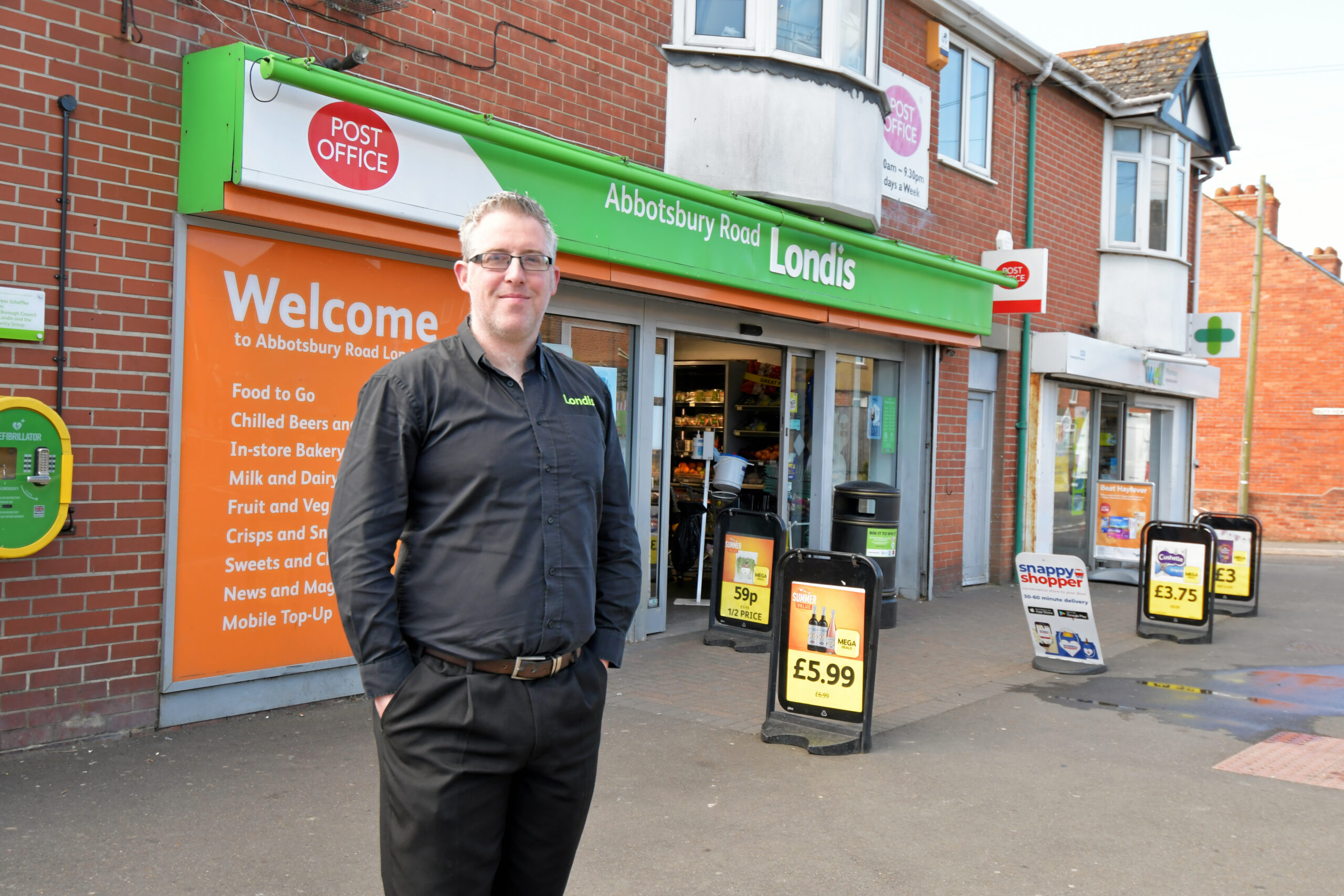

Comments
This article doesn't have any comments yet, be the first!